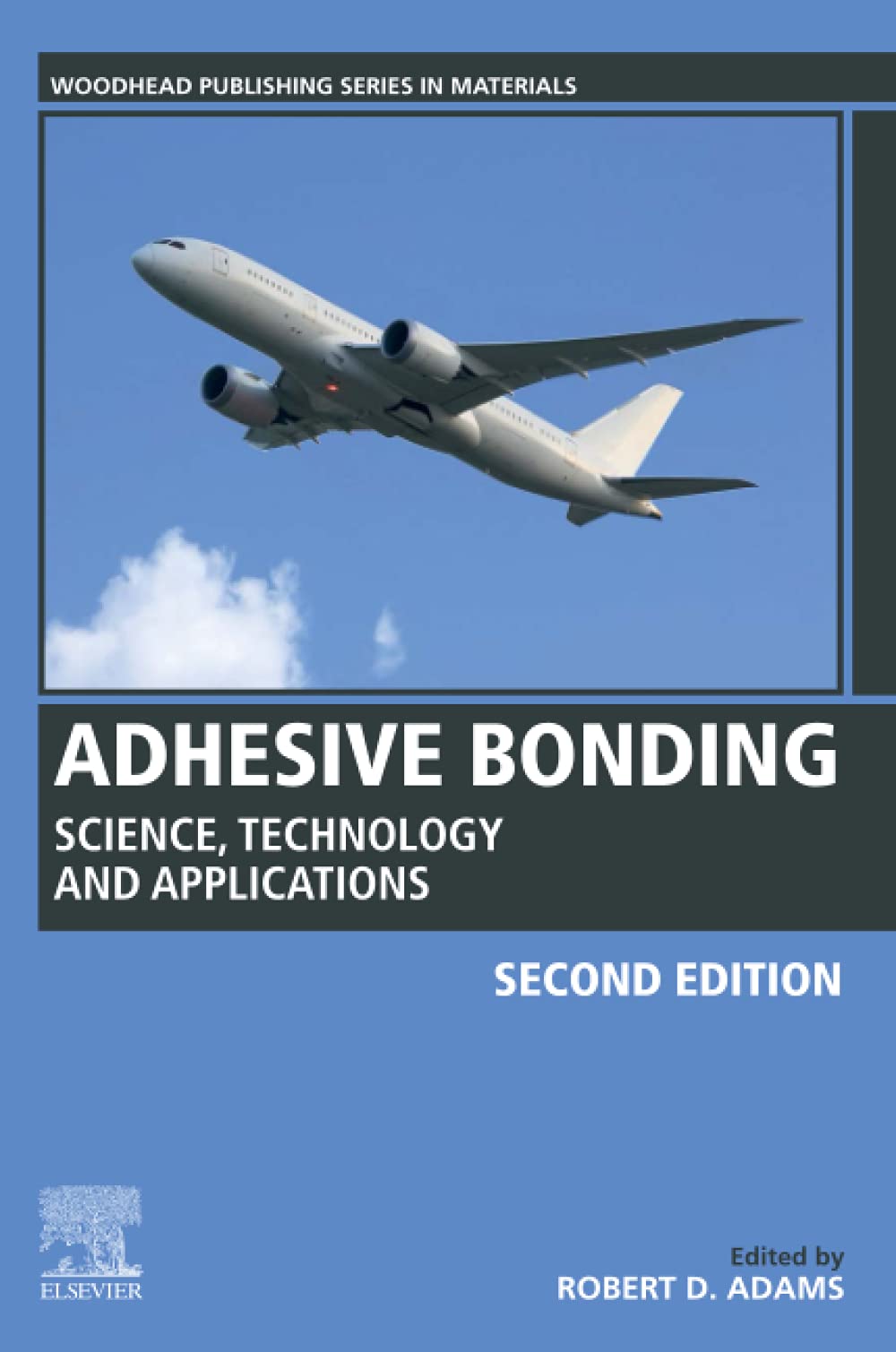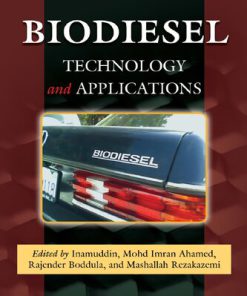Adhesive Bonding Science Technology and Applications 2nd Edition by Robert Adams 0128199547 9780128199541
$50.00 Original price was: $50.00.$25.00Current price is: $25.00.
Adhesive Bonding Science Technology and Applications 2nd Edition by Robert Adams – Ebook PDF Instant Download/Delivery: 0128199547, 9780128199541
Full download Adhesive Bonding Science Technology and Applications 2nd Edition after payment

Product details:
ISBN 10: 0128199547
ISBN 13: 9780128199541
Author: Robert D. Adams
Adhesive Bonding: Science, Technology and Applications, Second Edition guides the reader through the fundamentals, mechanical properties and applications of adhesive bonding. This thoroughly revised and expanded new edition reflects the many advances that have occurred in recent years. Sections cover the fundamentals of adhesive bonding, explaining how adhesives and sealants work, and how to assess and treat surfaces, how adhesives perform under stress and the factors affecting fatigue and failure, stress analysis, environmental durability, non-destructive testing, impact behavior, fracture mechanics, fatigue, vibration damping, and applications in construction, automotive, marine, footwear, electrical engineering, aerospace, repair, electronics, biomedicine, and bonding of composites.
With its distinguished editor and international team of contributors, this book is an essential resource for industrial engineers, R&D, and scientists working with adhesives and their industrial applications, as well as researchers and advanced students in adhesion, joining, polymer science, materials science and mechanical engineering.
- Offers detailed, methodical coverage of the fundamentals, mechanical properties and industrial applications of adhesive bonding
- Enables the successful preparation of adhesives for a broad range of important load-bearing applications in areas such as automotive and aerospace, construction, electronics and biomedicine
- Covers the latest advances in adhesive bonding, including improved repair techniques for metallic and composite structures, cohesive zone modeling, and disassembly and recycling
Adhesive Bonding Science Technology and Applications 2nd Table of contents:
Part One: Fundamentals of Adhesive Bonding
1: A history of adhesive bonding
Abstract
1.1: Introduction
1.2: Adhesives in nature
1.3: Prehistoric adhesives
1.4: Classical civilisations: Egyptians, Greeks, and Romans
1.5: Mediaeval artists
1.6: Mediaeval literature
1.7: Renaissance science and philosophy
1.8: The industrialisation of glue making
1.9: The advent of synthetic polymers
1.10: The present status
2: What are adhesives and sealants and how do they work?
Abstract
2.1: Introduction
2.2: Bulk properties
2.3: Adhesives which harden by loss of solvent
2.4: Adhesives which harden by loss of water
2.5: Adhesives which harden by cooling
2.6: Adhesives which harden by chemical reaction
2.7: Pressure-sensitive adhesives
2.8: Adhesion by physical adsorption
2.9: Adhesion by chemical bonding
2.10: The electrostatic theory of adhesion
2.11: Mechanical interlocking
2.12: Adhesion by interdiffusion
2.13: Weak boundary layers
2.14: Pressure-sensitive adhesion
3: Surfaces: How to assess
Abstract
Acknowledgements
3.1: Introduction
3.2: Surface topography
3.3: Surface thermodynamics
3.4: Surface chemical analysis
3.5: Compositional depth profiling by XPS and ToF-SIMS
3.6: Forensic analysis of failed joints
3.7: Concluding remarks
4: Surface pretreatments for optimised adhesive bonding
Abstract
4.1: Introduction
4.2: Cleaning surfaces
4.3: General pretreatments for metals
4.4: Pretreatments for polymers
4.5: Pretreatments for glass
4.6: Summary
5: Properties of adhesives
Abstract
5.1: Introduction
5.2: Chemical/physical characterisation and properties
5.3: Electrical properties
5.4: Process parameters
5.5: Mechanical properties
5.6: Mechanical capability
5.7: Conclusions
Part Two: Mechanical properties
6: Stress analysis of adhesive joints
Abstract
6.1: Introduction
6.2: Different stress types and sources
6.3: Analytical approaches
6.4: Numerical methods
6.5: Conclusion
7: Environmental (durability) effects
Abstract
7.1: Introduction
7.2: Additives to reduce photo-oxidative degradation
7.3: Behaviour of structural joints to metals in wet surroundings
7.4: Water and adhesives
7.5: Water and adhesive interfaces
7.6: Other fluids
7.7: Timber joints
8: Nondestructive inspection of adhesive bonded joints
Abstract
8.1: Introduction
8.2: Conventional ultrasonic methods
8.3: Bond testers
8.4: Quality control and visual inspection
8.5: Contamination of surfaces
8.6: Rapid scanning methods
8.7: Monitoring environmental degradation
8.8: Conclusions
9: High-rate loading and impact in adhesively bonding joints
Abstract
9.1: Introduction
9.2: Definition of high rate loading and impact
9.3: Deformation of adhesively bonded joints subjected to high-rate loading or impact
9.4: Experimental methods and standards
9.5: Design of adhesively bonded joints subjected to impact loading
9.6: Conclusion
10: Applying fracture mechanics to adhesive bonds
Abstract
10.1: Introduction
10.2: An energy criterion for failure
10.3: The stress intensity factor approach
10.4: The energy release rate approach
10.5: Thermodynamic, intrinsic, and practical adhesion energy
10.6: Experimental evaluation of fracture energy
10.7: The effect of bondline thickness
10.8: The effect of mode Mixity
10.9: Durability
10.10: Designing with fracture mechanics
10.11: Recent developments and current research areas
10.12: Conclusions
11: Fatigue
Abstract
11.1: Introduction
11.2: General aspects of fatigue
11.3: Total life methods
11.4: Fracture mechanics approach
11.5: Strength and stiffness wear-out approaches
11.6: Damage mechanics approach
11.7: Creep–fatigue
11.8: Impact fatigue
11.9: Fatigue strength improvement
11.10: Summary and future directions
12: Vibration damping
Abstract
12.1: Introduction
12.2: Damping in structures
12.3: Damping due to friction in joints
12.4: Damping due to structural adhesive bonding
12.5: Constrained and unconstrained damping treatments
12.6: Experimental data on vibration damping of adhesively bonded joints
12.7: Future trends
13: Joining similar and dissimilar materials
Abstract
13.1: Introduction
13.2: Joint design
13.3: Adhesive selection
13.4: Surface pretreatments
13.5: Assembly issues and hybrid joining
13.6: Future trends
14: Effect of disassembly on environmental and recycling issues in bonded joints
Abstract
14.1: Introduction
14.2: Impact of adhesive bonding in the environment
14.3: Basic strategies to meet the challenge for environmental issues
14.4: Types, characteristics, and applications of dismantlable adhesives
14.5: Recent progress
14.6: Future seeds
14.7: Conclusion
15: Adhesively bonded repairs to highly loaded structure
Abstract
Acknowledgements
15.1: Introduction
15.2: Repair of metallic components
15.3: Repair of composite components
15.4: Materials engineering
15.5: Assessment of structural integrity in bonded repairs
15.6: Reinforcement
15.7: Conclusions
16: Adhesive bonding of composites
Abstract
Acknowledgements
16.1: Introduction
16.2: The specific nature of composite materials
16.3: Design of bonded composite assemblies
16.4: Surface preparation
16.5: Testing
16.6: Influence of bondline thickness
16.7: Examples of bonded composite structures
16.8: Durability and long-term performance
16.9: Future trends
16.10: Sources of information
17: Building and construction steel and aluminium
Abstract
17.1: Introduction
17.2: Generalities to adhesive selection
17.3: Strength of bonded joints
17.4: Surface preparation
17.5: Additional aspects
18: Building and construction: Timber engineering and wood-based products
Abstract
18.1: Introduction and overview
18.2: Basic needs and applications
18.3: Wood characteristics
18.4: Wood-adhesive bond formation and performance
18.5: Strength and durability
18.6: Common failures, testing, and quality control
18.7: Repair
18.8: Examples of use
18.9: Future trends and further reading
19: Automobiles
Abstract
19.1: Introduction
19.2: Basic needs
19.3: Adhesive characteristics required
19.4: Surface preparation
19.5: Strength and durability
19.6: Common failures
19.7: Inspection, testing, and quality control
19.8: Repair and recycling
19.9: Other industry-specific factors
19.10: Examples for use
20: Boats and marine
Abstract
20.1: Basic needs
20.2: Adhesive characteristics required
20.3: Surface preparation
20.4: Strength and durability
20.5: Common failures
20.6: Inspection, testing, and quality control
20.7: Repair
20.8: Examples of use
20.9: Future trends
21: Bonding in the shoe industry
Abstract
Acknowledgements
21.1: Introduction
21.2: Overview of the shoe bonding protocol
21.3: Surface preparation of the upper materials
21.4: Surface preparation of soles
21.5: Adhesives used in shoe bonding
21.6: Testing, quality control, and durability
21.7: Future trends
22: Electrical and electronics
Abstract
22.1: Introduction
22.2: Basic needs
22.3: Adhesive characteristics
22.4: Surface preparation
22.5: Strength and durability: Reliability
22.6: Common failures
22.7: Inspection, testing, and quality control
22.8: Examples of use
22.9: Conclusion
23: Aerospace industry applications of adhesive bonding
Abstract
23.1: Introduction
23.2: Adhesive characteristics required for design and analysis
23.3: Surface preparation
23.4: Design of adhesively bonded joints
23.5: Design features ensuring durability of bonded joints
23.6: Load redistribution around flaws and porosity
23.7: Effects of thermal mismatch between adherends on strength of bonded joints
23.8: Inspection, testing, and quality control
23.9: Bonded repairs and estimates of residual strength after apparent disbonds
23.10: Other industry-specific factors
23.11: Examples of use of adhesive bonding in aircraft structures
23.12: Rules of thumb
People also search for Adhesive Bonding Science Technology and Applications 2nd:
adhesives technology handbook
adhesion and adhesives technology s
cience adhesion
adhesion and adhesives science and technology
Tags:
Robert Adams,Adhesive,Bonding,Science
You may also like…
Computers - Applications & Software
Computers - Computer Science
Computers - Networking
Biodiesel Technology and Applications Technology and Applications 1st Edition Inamuddin
Uncategorized
Tantalum and Niobium Based Capacitors Science Technology and Applications Second Edition Freeman
Computers - Artificial Intelligence (AI)
Computers - Computer Certification & Training










